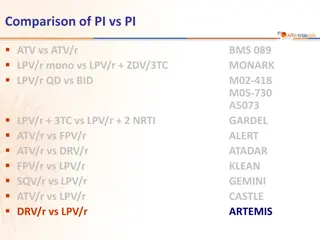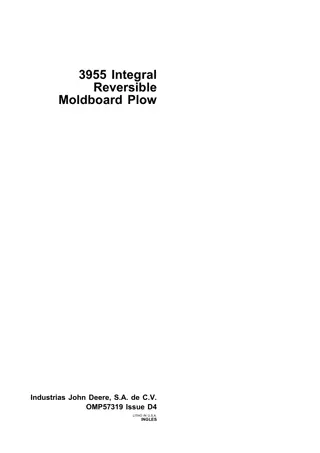SGLT-2 inhibitors and AKI
Consultant Nephrologist Paraskevi Liaveri discusses the association between SGLT-2 inhibitors and acute kidney injury (AKI). Pharmacovigilance reports highlight a higher risk of AKI with these drugs, especially when combined with RAAS blockers, diuretics, or NSAIDs. Studies suggest potential mechani
0 views • 49 slides
DEVELOPMENT OF INTERATRIAL AND INTERVENTRICULAR SEPTUM
Human heart development begins in the 3rd week of gestation with the formation of heart tubes that eventually differentiate into various cardiac structures. The heart undergoes folding and septation processes during development, leading to the formation of crucial septa. Molecular regulation, involv
3 views • 62 slides
Cryogenic Sub-systems
Explore the relationship between liquefaction, refrigeration, and isothermal processes in accelerator systems. Understand the equivalent exergy in Watts for different gases at 1 bar and 300K. Calculate the reversible input power required for latent cooling and the total cooling in different scenario
1 views • 9 slides
HYPOLIPIDEMIC DRUGS
Major lipids like cholesterol and triglycerides play essential roles in the body, but their excess can lead to hyperlipidemia and related conditions. This overview covers the biosynthesis of cholesterol, triglycerides, and the transport of lipids in the bloodstream, discussing the importance of lipo
1 views • 30 slides
Regulation of Energy Homeostasis by AMPK System and Its Modulation Factors
The AMPK system plays a crucial role in regulating energy homeostasis by sensing the cellular AMP:ATP ratio and responding to metabolic stresses that affect ATP production or consumption. AMPK is activated by factors such as hypoxia, glucose deprivation, and metabolic inhibitors, as well as by compo
0 views • 27 slides
COX Enzymes and Their Impact on Pain and Inflammation
COX enzymes, including COX1, COX2, and COX3, play a crucial role in synthesizing prostanoids like prostaglandins in the body, affecting pain and inflammation. By inhibiting these enzymes, relief from pain and inflammation can be achieved. However, non-selective COX inhibitors may lead to various sid
0 views • 21 slides
Drugs for Hyperlipidemia Summary and Quiz MCQs
This presentation covers drugs for hyperlipidemia, including bile acid sequestrants, cholesterol absorption inhibitors, statins, fibrates, and relevant drug interactions. It details the actions, adverse effects, contraindications, and notable considerations for each drug class. The included multiple
0 views • 6 slides
Reversible and Irreversible Changes in Chemistry
Exploring the concepts of reversible and irreversible changes in chemistry through examples such as heating, mixing, and burning. Reversible changes allow original materials to be recovered, while irreversible changes result in the formation of new materials. Various chemical reactions are highlight
0 views • 15 slides
Reversible and Irreversible Changes in Science
Explore the differences between reversible and irreversible changes through a crystal experiment and vocabulary development. Discover examples of reversible changes like dissolving and test various materials for solubility. Engage in designing a presentation to illustrate the contrast between revers
1 views • 13 slides
Factors Affecting Enzyme Activity and Catalysis
Enzyme activity is influenced by various factors such as enzyme concentration, temperature, pH, substrate concentration, inhibitors, activators, and physical agents. The rate of enzyme-catalyzed reactions is directly proportional to enzyme concentration, and temperature plays a significant role with
0 views • 23 slides
Corrosion Prevention Methods in Chemical Engineering
Define oxidation, reduction, oxidizing agent, reducing agent, standard electrode potential, Nernst equation, and corrosion in the context of chemical engineering. Discuss different forms of corrosion, including uniform corrosion, galvanic corrosion, pitting corrosion, and stress corrosion. Explore m
1 views • 20 slides
Overview of Antihypertensive Agents and their Mechanisms of Action
Explore the classification of antihypertensive agents used in treating hypertension, including beta blockers, centrally acting agents, ganglionic blockers, ACE inhibitors, vasodilators, and more. Learn about the Renin-Angiotensin System, ACE inhibitors, and specific drugs like Captopril and Benazepr
0 views • 9 slides
Chemical Equilibrium in Reversible Reactions and Laws
Chemical equilibrium in reversible reactions involves the balance between forward and backward reactions, as governed by laws like the law of mass action and the law of chemical equilibrium. These laws help in understanding the rates of reactions, equilibrium constants, and the relationship between
1 views • 12 slides
Dynamic Equilibrium in Chemical Reactions
Explanation of reversible reactions, dynamic equilibrium, and the characteristics of equilibrium in chemical systems. Covers the concept of reversible reactions, dynamic equilibrium, rules for dynamic equilibrium, and examples to illustrate these concepts visually.
0 views • 54 slides
Innovations in Pet Food Ingredients Focus on Enhanced Palatability
Pet Food Ingredients Market By Pet (Dog, Cat, Fish, and Others), By Ingredients (Specialty Proteins, Amino Acids, Mold Inhibitors, Gut Health Ingredients, Phosphates, Vitamins, Acidifiers, Carotenoids, Enzymes, Mycotoxin Detoxifiers, Flavors & Sweete
1 views • 4 slides
Pharmacological Management of Alzheimer's Disease and Cognitive Enhancers
Cognitive enhancers play a crucial role in managing Alzheimer's Disease, with Cholinesterase inhibitors (AChEI) like Donepezil, Galantamine, and Rivastigmine recommended for mild to moderate AD, and Memantine for moderate to severe cases. These medications act through different mechanisms, with AChE
0 views • 46 slides
Factors Affecting Enzyme Activity and Kinetics Experiments
Explore the factors influencing enzyme activity, such as substrate and enzyme concentration, temperature, pH, and inhibitors. Learn how to simulate enzyme kinetics using equipment like popping beads and stopwatches. Analyze results to understand the impact of substrate concentration on reaction rate
0 views • 22 slides
Advances in Antimicrobial Drugs: Selective Toxicity and Classification
The development of antimicrobial drugs has significantly improved therapeutics by controlling infections and preventing complications. These drugs target invading microorganisms using selective toxicity, sparing host cells. Antimicrobial drugs are classified based on site, mechanism of action, and c
2 views • 30 slides
Enzyme Inhibition in Biochemistry
Enzyme inhibition plays a crucial role in pharmacology and biochemistry by regulating enzymatic reactions. Inhibitors can be reversible or irreversible, affecting enzyme activity differently. Competitive, uncompetitive, and noncompetitive inhibition types are explained along with examples like diiso
0 views • 20 slides
Small-State Noncryptographic Pseudorandom Number Generators
Explore the design and testing of small-state noncryptographic pseudorandom number generators, including definitions, rules of thumb, chisquare tests, existing and new generators, and more. Learn about block cipher encryption, hash functions, pseudorandom number generation, reversible mixing, and re
0 views • 46 slides
Enzyme Inhibition in Acid Phosphatase Kinetics
In this experiment, the effect of inhibitors on enzymatic reactions, specifically acid phosphatase, is explored. Different types of inhibition (competitive, noncompetitive, uncompetitive) are examined, along with reversible and irreversible inhibitors. The study aims to determine the type of inhibit
1 views • 17 slides
Antibiotic Prescribing Impact on Clostridium Difficile Risk in Patients on Protein Pump Inhibitors
Antibiotic prescribing in patients on protein pump inhibitors (PPIs) is associated with an increased risk of Clostridium difficile infection. A review was conducted on high-risk antibiotic prescriptions, revealing instances where patients were prescribed against guidelines, leading to potential comp
0 views • 5 slides
Chemical Equilibrium in Reversible Reactions
Chemical equilibrium occurs when the concentrations of reactants and products remain constant over time in a reversible reaction. Reaction rate is proportional to concentration, and equilibrium is reached when the rate of formation equals the rate of consumption in both directions. Reversible reacti
0 views • 25 slides
Antipsychotics and Antidepressants in Veterinary Pharmacology
Antipsychotics and antidepressants play crucial roles in treating psychological and affective disorders in veterinary medicine. Antidepressants are vital in managing abnormal mood and behavior linked to depression, while antipsychotics help address various nervous disorders. The classification of an
0 views • 11 slides
Optimizing Foundational Treatments for HFrEF: Guideline Recommendations and Implementation Strategies
Highlighting the current guideline recommendations for treating patients with Heart Failure with Reduced Ejection Fraction (HFrEF), this educational slide module emphasizes the importance of implementing the recommended therapies effectively. It covers the foundational treatments recommended by vari
0 views • 28 slides
Dormancy in Plants: Causes and Implications
Dormancy in plants, involving seeds and buds, is a state where growth is temporarily halted due to internal or external factors. Factors like immature embryos, impermeable seed coats, and growth inhibitors contribute to seed dormancy. The presence of inhibitors like abscisic acid and the influence o
1 views • 43 slides
Diverse Applications of PDE-5 Inhibitors Beyond Erectile Dysfunction
Discover how PDE-5 inhibitors go beyond treating erectile dysfunction, with approved and emerging compounds, alternative dose regimens, concentration sites, and potential targets like cardiovascular diseases and the central nervous system.
0 views • 47 slides
mTOR Inhibitors in Liver Transplantation for HCC: Recent Updates and Clinical Trials
Exploring the use of mTOR inhibitors in liver transplantation for hepatocellular carcinoma (HCC), this content presents recent study results and experiences from the Korean population. It discusses the preventive potential of mTOR inhibitors in HCC recurrence based on previous studies and the need f
0 views • 32 slides
Guideline Recommendations for SGLT2 Inhibitors in Heart Failure
This educational slide module provides an overview of the guideline recommendations for SGLT2 inhibitors in the treatment of heart failure, including HFrEF, HFmrEF, and HFpEF. It covers recommendations from AHA, ACC, HFSA, ESC, CCS, and CHFS guidelines, highlighting the role of SGLT2 inhibitors as a
0 views • 28 slides
Antifungal Inhibitors and Drugs
In this detailed overview, we explore antifungal inhibitors and drugs, including their mechanisms of action, impact on eukaryotes and prokaryotes, common agents affecting fungal sterols and cell walls, as well as synthetic antifungals. From polyenes like nystatin to azoles such as voriconazole, this
0 views • 12 slides
Enzyme Regulation and Factors Affecting Enzyme Activity
Organisms carefully control enzyme production and activation as per varying needs and conditions within cells. Enzyme activity is influenced by factors such as pH, temperature, regulatory molecules, cofactors, compartmentalization, covalent modification, and feedback inhibition. Enzymes can be regul
0 views • 20 slides
Comparison of Protease Inhibitors in ARTEMIS Study
This study compares the efficacy and safety of different protease inhibitors (PIs) including ATV, ATV/r, LPV/r, FPV/r, DRV/r, and SQV/r in HIV treatment. The ARTEMIS study specifically focuses on comparing DRV/r and LPV/r in combination with TDF/FTC in ARV-naive patients. Results show non-inferiorit
0 views • 12 slides
Therapies and Strategies for ER-Positive, HER2-Negative Metastatic Breast Cancer
Explore the selection and sequence of therapy for ER-positive, HER2-negative metastatic breast cancer, along with novel agents and strategies under evaluation. Learn about cases of postmenopausal women with metastatic breast cancer, CDK4/6 inhibitors, and the impact of targeted therapies on patient
0 views • 23 slides
Reversible Strain Behavior in Bi-2212 Magnet Design Literature
Literature review on the strain sensitivity of Bi-2212 wires, focusing on reversible transverse pressure strain and its impact on magnet design. Discussions on the correlation between axial and transverse strain behavior, the effects of heat treatments, and variations in strain sensitivity among man
0 views • 5 slides
PCSK9 Inhibitors for Cardiovascular Health
PCSK9 inhibitors are a novel class of medications that help lower LDL cholesterol levels, reducing the risk of cardiovascular events. This article covers their mechanism of action, patient groups benefiting from them, efficacy in LDL-C lowering, and safety considerations. Learn how PCSK9 inhibitors
0 views • 8 slides
John Deere 965 Series Reversible On-land Moldboard Plow Operator’s Manual Instant Download (Publication No.OMP57490)
John Deere 965 Series Reversible On-land Moldboard Plow Operator\u2019s Manual Instant Download (Publication No.OMP57490)
0 views • 18 slides
John Deere F230H Series Integral Two-Way Reversible Disk Plows Operator’s Manual Instant Download (Publication No.OMA15058)
John Deere F230H Series Integral Two-Way Reversible Disk Plows Operator\u2019s Manual Instant Download (Publication No.OMA15058)
0 views • 18 slides
John Deere 995 Series Reversible On-land Moldboard Plow Operator’s Manual Instant Download (Publication No.omp60049)
John Deere 995 Series Reversible On-land Moldboard Plow Operator\u2019s Manual Instant Download (Publication No.omp60049)
0 views • 18 slides
John Deere 3835 Integral Reversible Moldboard Plow Operator’s Manual Instant Download (Publication No.omp57389)
John Deere 3835 Integral Reversible Moldboard Plow Operator\u2019s Manual Instant Download (Publication No.omp57389)
0 views • 10 slides
John Deere 3955 Integral Reversible Moldboard Plow Operator’s Manual Instant Download (Publication No.omp57319)
John Deere 3955 Integral Reversible Moldboard Plow Operator\u2019s Manual Instant Download (Publication No.omp57319)
0 views • 12 slides







































